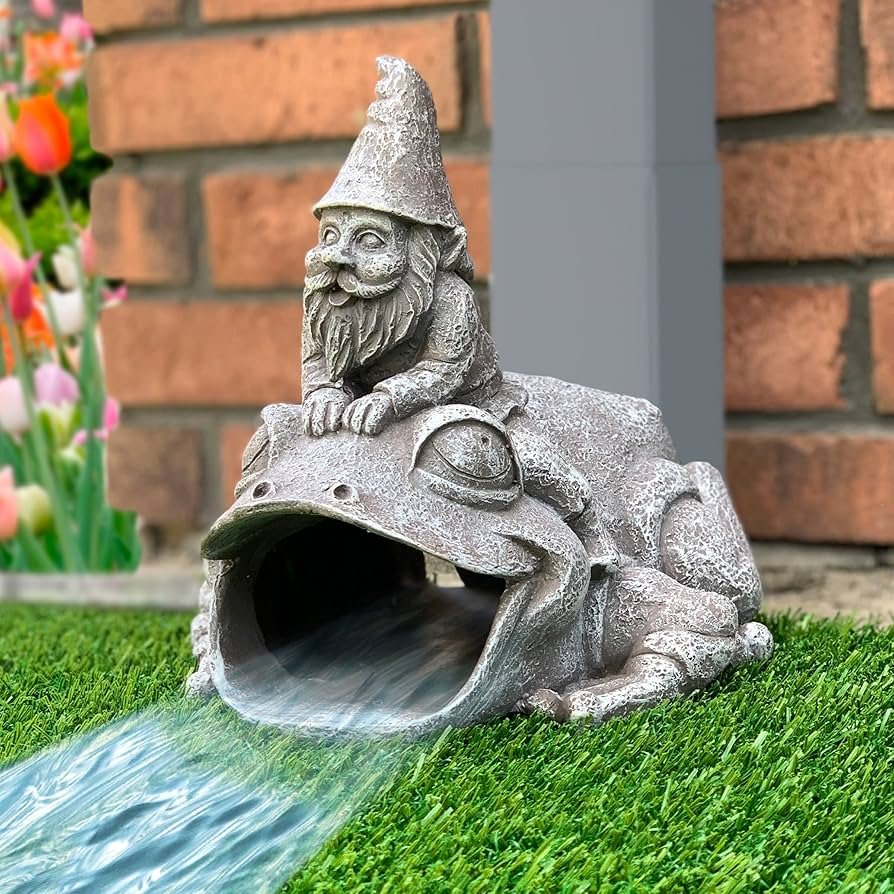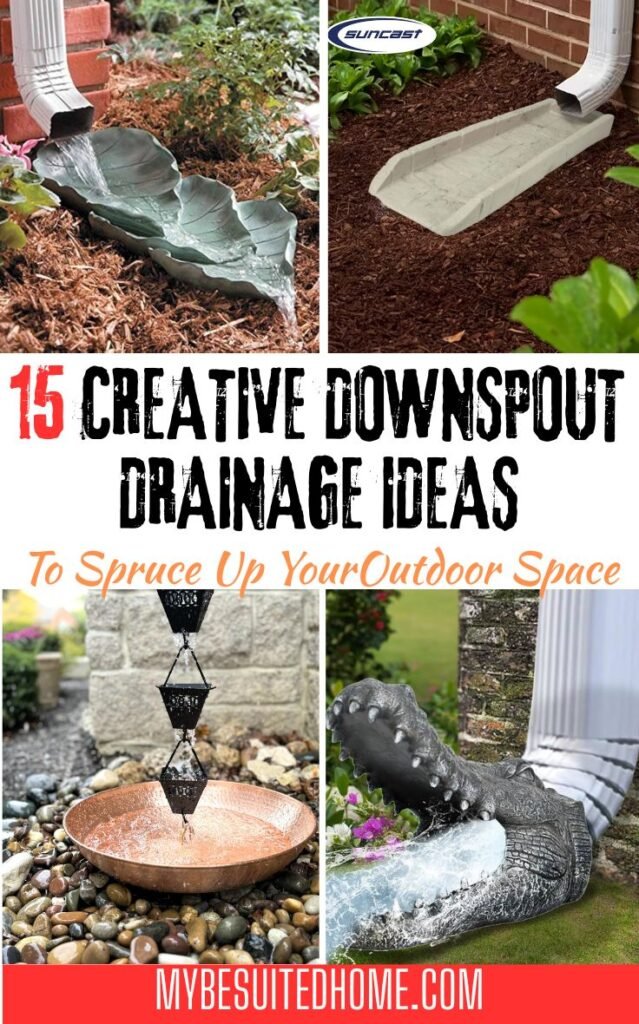
Keeping water away from your home’s foundation is critical—but who says it has to be boring? Downspouts are often overlooked, yet with a little creativity, you can turn them into functional, beautiful parts of your landscaping. These 15 inventive downspout drainage ideas help prevent erosion, flooding, and water damage while elevating your curb appeal.
Let’s explore ways to transform your water drainage into a visual asset for your outdoor space.
1. Decorative Splash Blocks

Splash blocks are among the easiest ways to manage water from a downspout. Positioned at the base of the spout, they channel water away from the home and help prevent erosion or foundation damage. Traditionally made from concrete, they catch and redirect rainwater runoff from heavy storms.
But don’t settle for basic—modern splash blocks come in all kinds of styles, including carved stone, faux rock, or even animal-shaped designs like turtles and frogs. These little details add charm while remaining fully functional. They’re perfect for anyone who wants an instant upgrade with minimal effort.
They’re also easy to install—just place them at a slight angle to guide water away from your home. Combine them with gravel or plants to create a visually pleasing water exit point that doesn’t scream “drainage system.”
2. Rain Chains with Basins
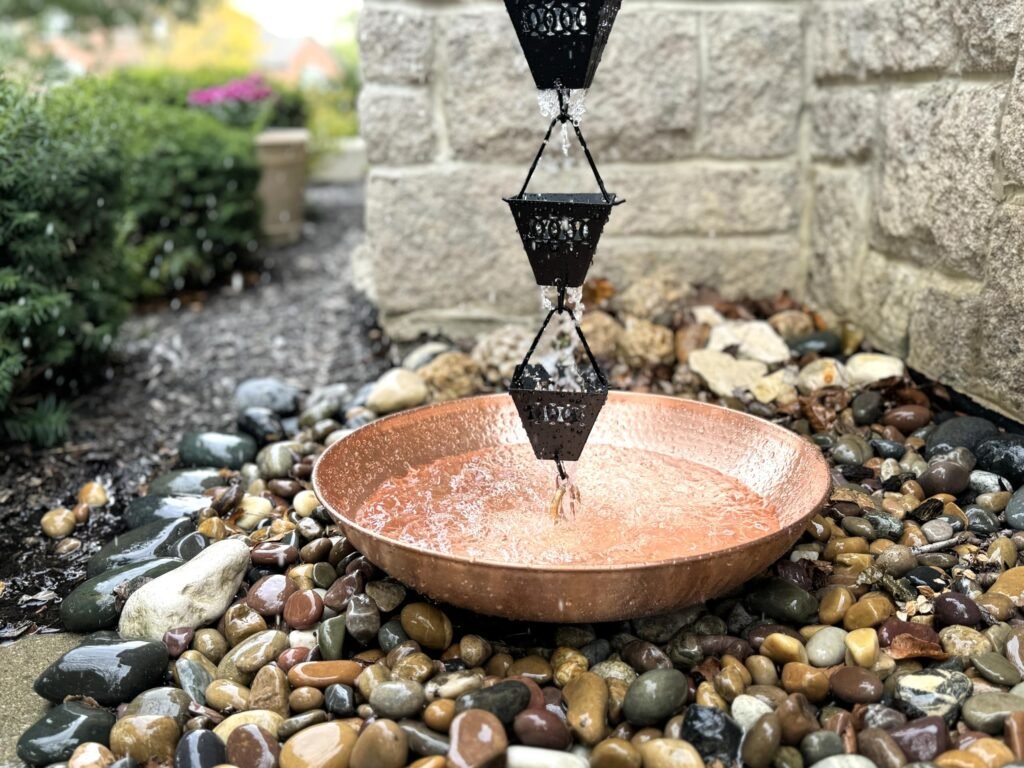
A beautiful alternative to traditional downspouts, rain chains guide water from gutters using linked cups or rings. As the water travels down, it creates a cascading effect that adds motion and sound to your home’s exterior. It’s a subtle feature that turns rainy days into peaceful experiences.
At the bottom of a rain chain, a decorative basin, bowl, or even a rock-filled pit can collect the water. This not only completes the look but also helps manage drainage by containing runoff. Choose a hammered copper or ceramic basin for extra elegance or blend it into a rock garden.
Rain chains are especially popular in Japanese or modern garden aesthetics. They’re perfect for front porch areas where you want to create a focal point, and installation is usually simple, using your existing gutter setup.
3. Underground Drainage Pipes

Sometimes the best drainage system is one you don’t see at all. Underground drainage pipes carry water from the base of your downspout and move it far away from your home’s foundation. They’re especially effective in homes that deal with frequent, heavy rain.
To make this system work, you’ll need to install a catch basin where the downspout ends, then connect it to a PVC or corrugated pipe that leads downhill or to a dry well. With proper slope and routing, water flows effortlessly underground without leaving puddles or damaging your landscaping.
This option is ideal for homeowners who want efficiency and a clean, minimalist yard. Pair it with a discreet downspout adapter, and you’ve got a virtually invisible system that does a big job behind the scenes.
4. Gravel-Filled Trench or French Drain
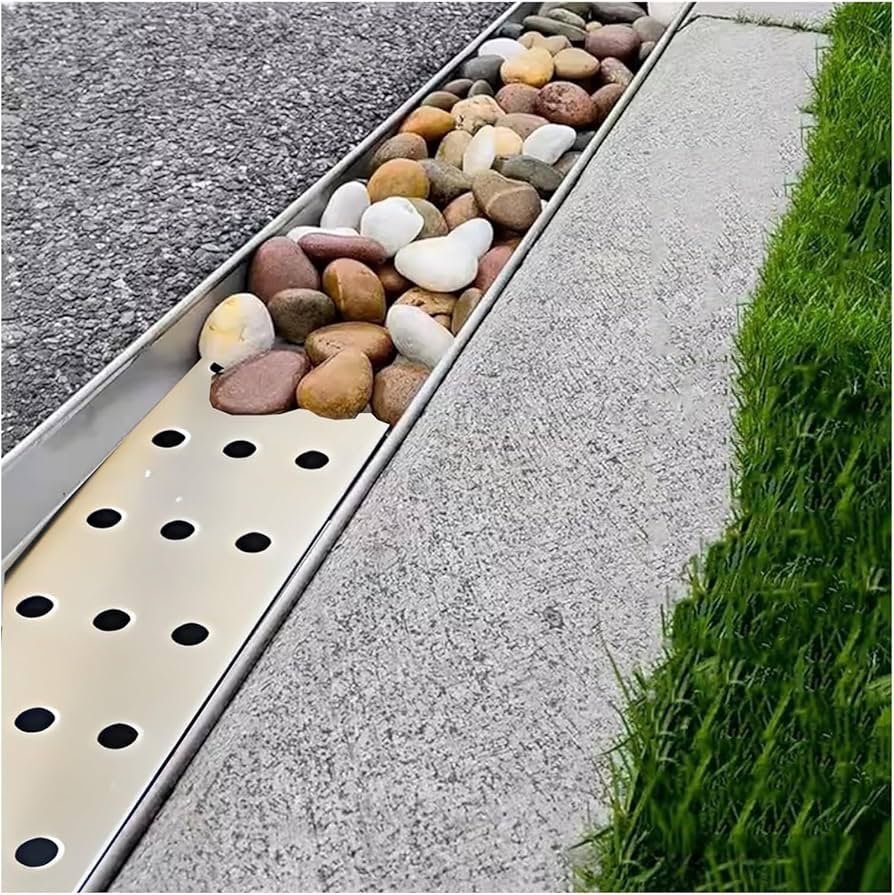
French drains offer a hidden but highly effective way to manage drainage. These gravel-filled trenches collect and redirect water using a perforated pipe buried beneath the surface. When installed properly, they reduce standing water and erosion across your yard.
Visually, French drains can be integrated into pathways or garden beds. Top them off with decorative gravel or river stones for an aesthetic boost. This blends function with form—no one will suspect it’s more than just a charming landscaping feature.
They’re particularly useful in areas with compacted soil or slopes, where runoff tends to pool. Whether paired with rain barrels or fed directly from your downspouts, French drains are a smart, long-term solution.
5. Dry River Bed Design
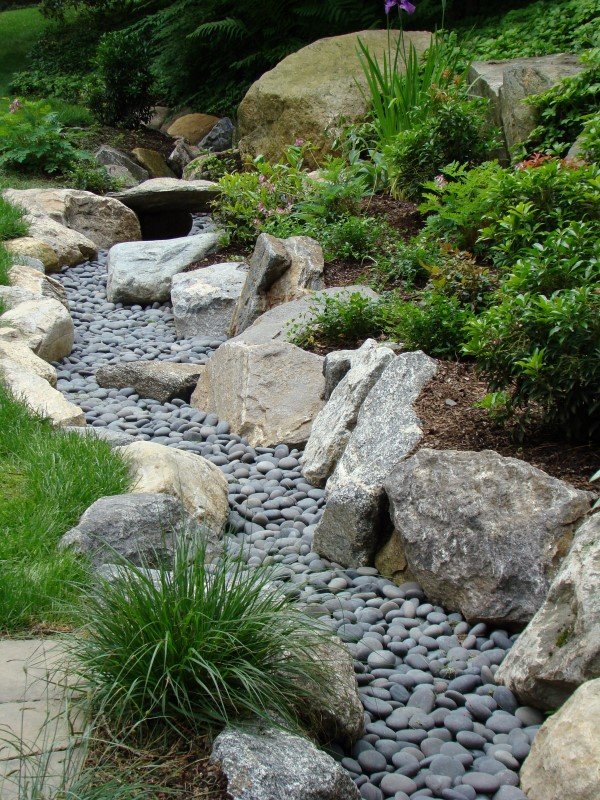
Dry river beds are one of the most visually appealing ways to deal with water flow. Created with river rocks, gravel, and occasional boulders, these “streams” serve as natural-looking channels that guide rainwater across your property.
Start by digging a shallow path from the downspout outward, then line it with landscaping fabric to prevent weed growth. Fill the trench with various sizes of stones, and you’ve got an elegant drainage system that doubles as a focal point in your garden.
Dry river beds are a favorite for xeriscaping and low-maintenance landscaping. Add drought-tolerant plants along the banks, and you’ll enjoy a natural-looking feature that looks good even when it’s dry.
6. Rain Gardens
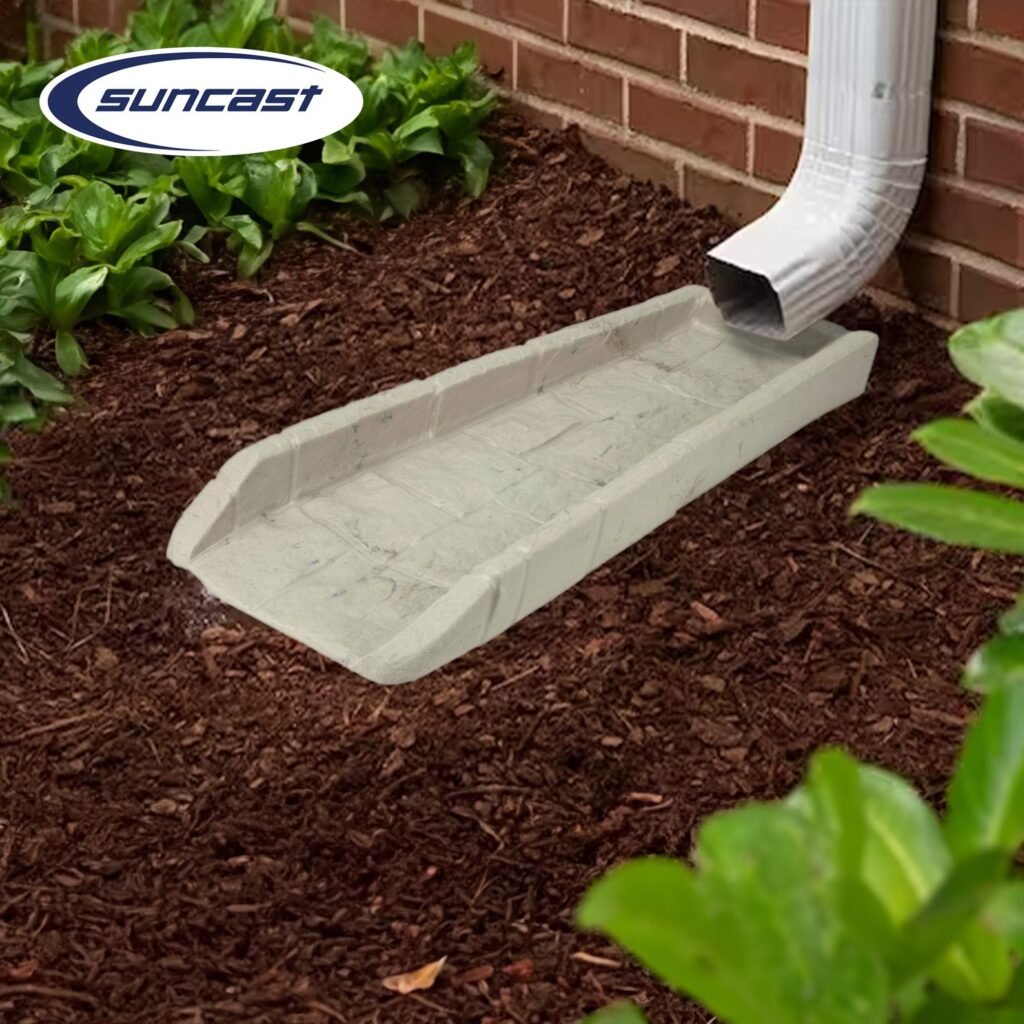
Why not turn runoff into something beautiful and beneficial? Rain gardens are designed to absorb and filter water from downspouts using native, water-loving plants. They improve drainage, support pollinators, and add vibrant color to your landscape.
To create one, dig a shallow basin where water naturally collects, then plant flowers, grasses, or shrubs that thrive in wet conditions—think black-eyed Susans, coneflowers, or ferns. The soil and root systems slow down water and reduce erosion.
Rain gardens also reduce the burden on stormwater systems and help filter pollutants. It’s an eco-friendly and eye-catching option that brings biodiversity right to your backyard.
7. Decorative Downspout Diverters
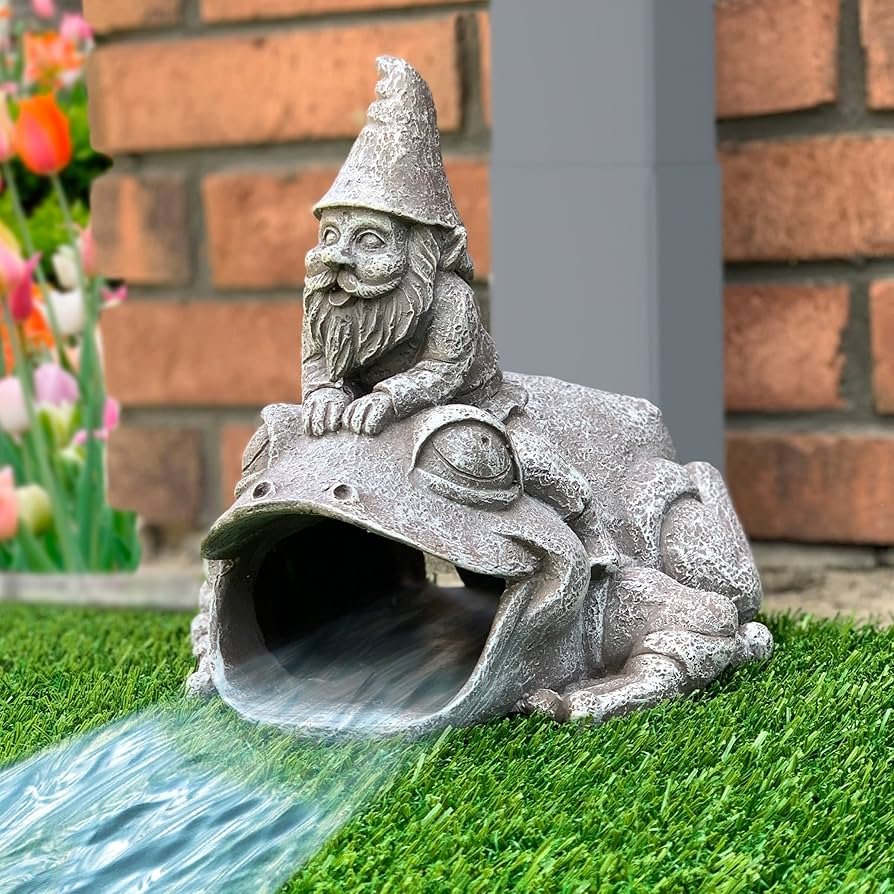
Instead of the standard elbow-shaped spout, consider a sculpted diverter that directs water with flair. These can take the form of dragons, gargoyles, or whimsical animals that channel rainwater away from your foundation.
These diverters are great conversation starters and can be made from materials like metal or resin. Some models even spout water from their mouths or wings—adding theatrical flair to an otherwise functional piece.
Use them in conjunction with a stone pad, barrel, or rain garden for a fully integrated design. It’s an artistic and clever way to make drainage a centerpiece rather than an afterthought.
8. Barrel-to-Hose Systems
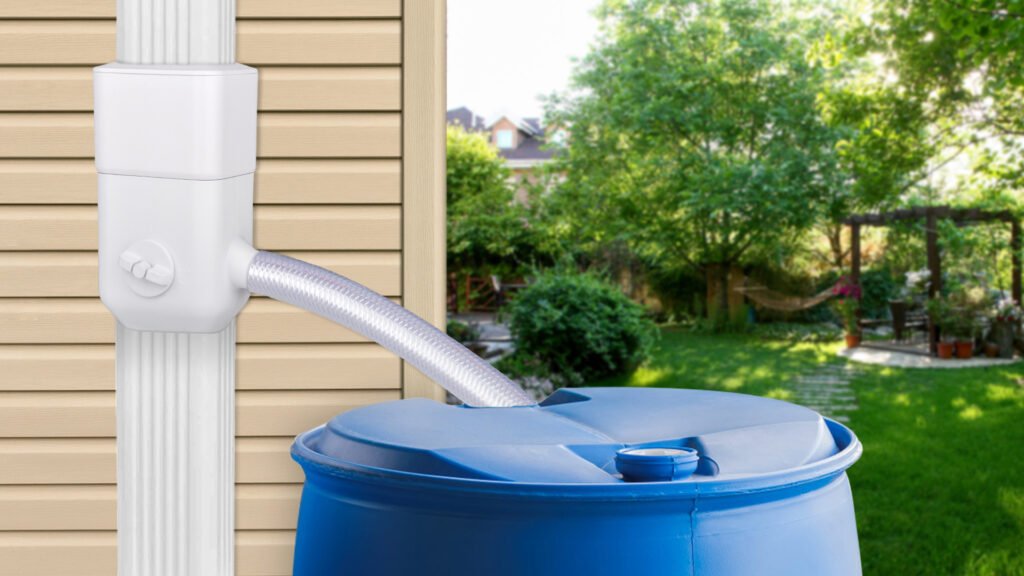
Rain barrels are a sustainable way to collect water, but what happens when they overflow? A smart solution is to attach a hose at the base that slowly releases water across your yard or directly into your garden beds.
This allows you to repurpose stored rainwater and control its release. Position the hose in a sloped area or near thirsty plants to make the most of every drop. You’ll reduce water bills while keeping your garden lush.
Barrel-to-hose systems are ideal for homes in areas with intermittent rainfall, allowing homeowners to store and distribute water efficiently. It’s eco-friendly, low-cost, and easy to install.
9. Stepping Stone Water Channels
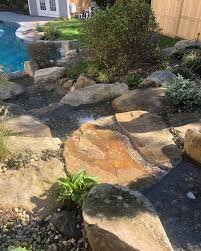
Want something unique and interactive? Create a path of flat stepping stones from the downspout through your garden, letting water travel between the stones. This design lets you walk through your garden while cleverly directing water flow.
Use natural stone or precast concrete pavers to blend into your landscaping. The gaps between stones can be filled with gravel or creeping ground cover like moss or thyme. During heavy rain, the water flows underneath or beside the stones.
It’s a playful yet practical solution that combines garden paths with subtle drainage. Kids love it, guests admire it, and your yard stays dry.
10. Drainage Rock Beds

Sometimes simple works best. A basic rock bed at the base of a downspout helps water percolate into the ground while minimizing splash and erosion. Use attractive stones like polished pebbles, lava rock, or river gravel for added appeal.
Shape the bed to match your landscape design, whether as a narrow stream or a wider basin. You can border it with edging or tuck it into flower beds for a seamless look. It also keeps mud from splashing onto your siding.
Drainage rock beds are a low-maintenance, affordable option that works well in almost any yard style—from contemporary to cottagecore.
11. Downspout Planters
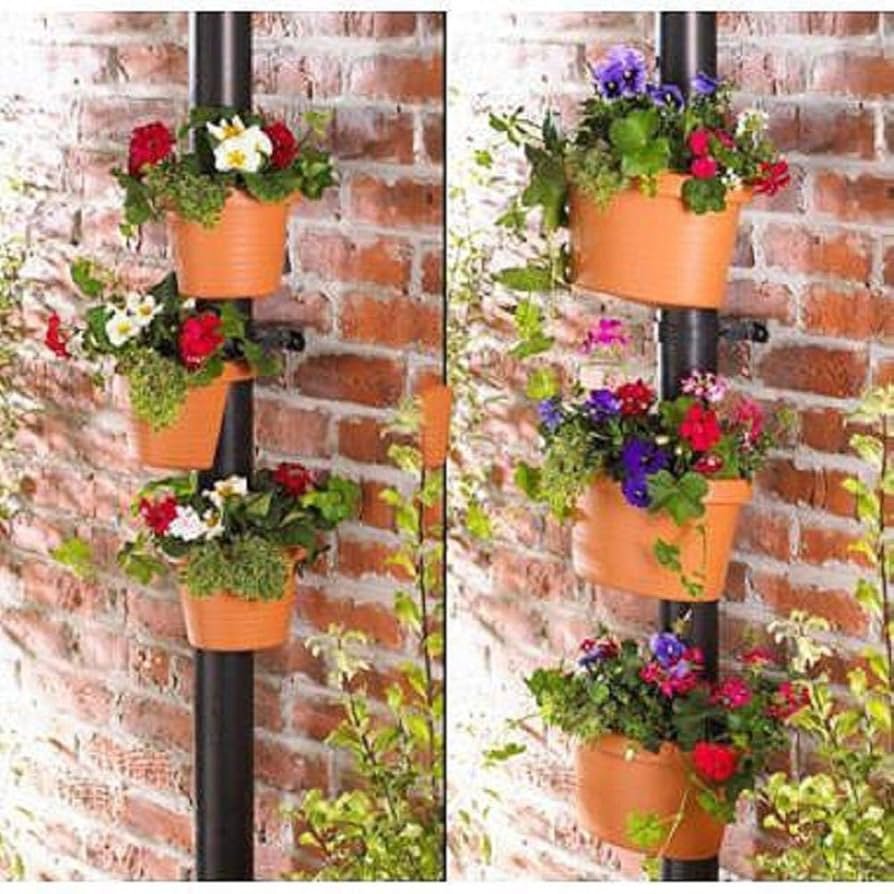
Combine greenery with water control using downspout planters. These are tiered containers or wall-mounted pots placed under your downspout that catch and filter water while growing plants.
The first planter collects water, then overflows to the next in a cascading system. You can grow herbs, succulents, or even small shrubs depending on the setup. Some even come with built-in drain holes to prevent overwatering.
Downspout planters are especially great for urban homes or small patios. They use vertical space effectively and bring life to an otherwise unused corner of your yard.
12. Concrete Troughs or Channels

Concrete drainage troughs offer a modern, architectural look while guiding water efficiently. These shallow U-shaped channels can be precast or poured in place to lead water from your downspout to the street or garden.
Use geometric shapes and clean lines to complement contemporary landscapes. Pair them with minimalist gravel beds or ornamental grasses for a sharp, sleek appearance.
Though more labor-intensive to install, concrete channels are durable, long-lasting, and incredibly effective for heavy flows. They’re ideal for high-traffic or high-visibility areas.
13. Wooden Barrel Basins
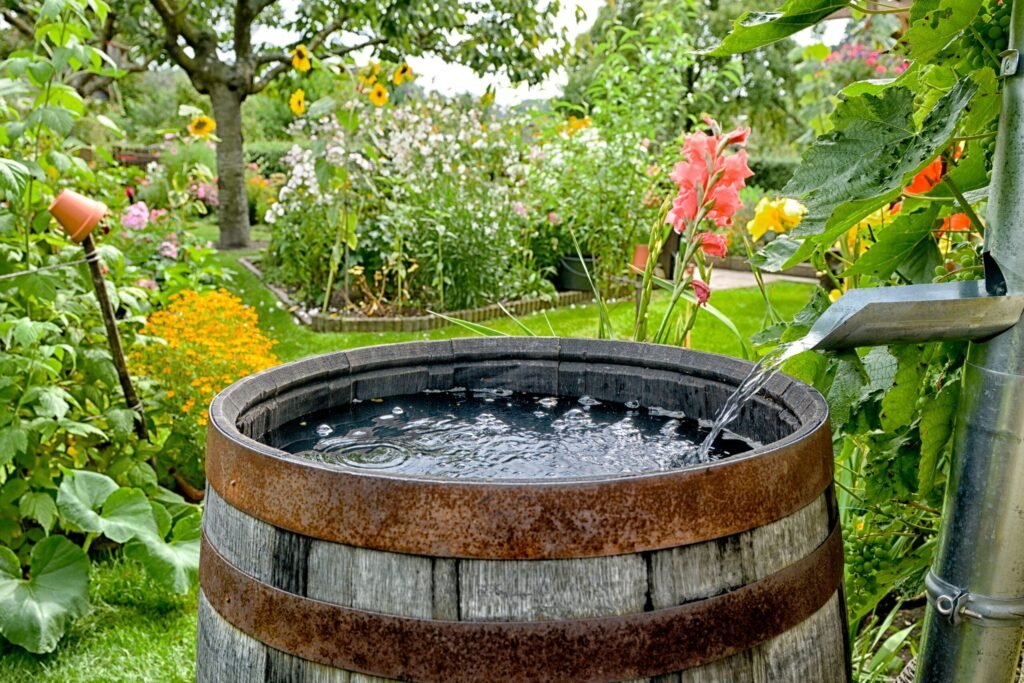
Bring rustic charm to your landscape with a wooden barrel basin. Place it at the end of your downspout to collect water before it’s redirected via hose or overflow pipe. Barrels can also serve as mini water features if outfitted with pumps.
Choose reclaimed whiskey or wine barrels for authenticity. Line them with waterproof sealant or a plastic liner to ensure longevity. Add floating plants or water-safe lighting for a magical touch.
They’re perfect for farmhouse-style homes or country gardens—and they pair beautifully with gravel beds or flower borders.
14. Rain Barrel Overflow System
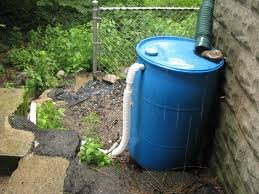
Maximize your rain barrel’s efficiency by installing an overflow system. This setup directs excess water from a full barrel into a secondary drainage route—like a garden bed, dry well, or another barrel.
This prevents water from pooling around the base and reduces potential flooding. Use a flexible pipe or rigid PVC and make sure it’s directed downhill or into a storage-friendly zone.
It’s a smart upgrade for anyone who already uses rain barrels and wants to prevent runoff issues while making use of every drop.
15. Artistic Downspout Sculptures
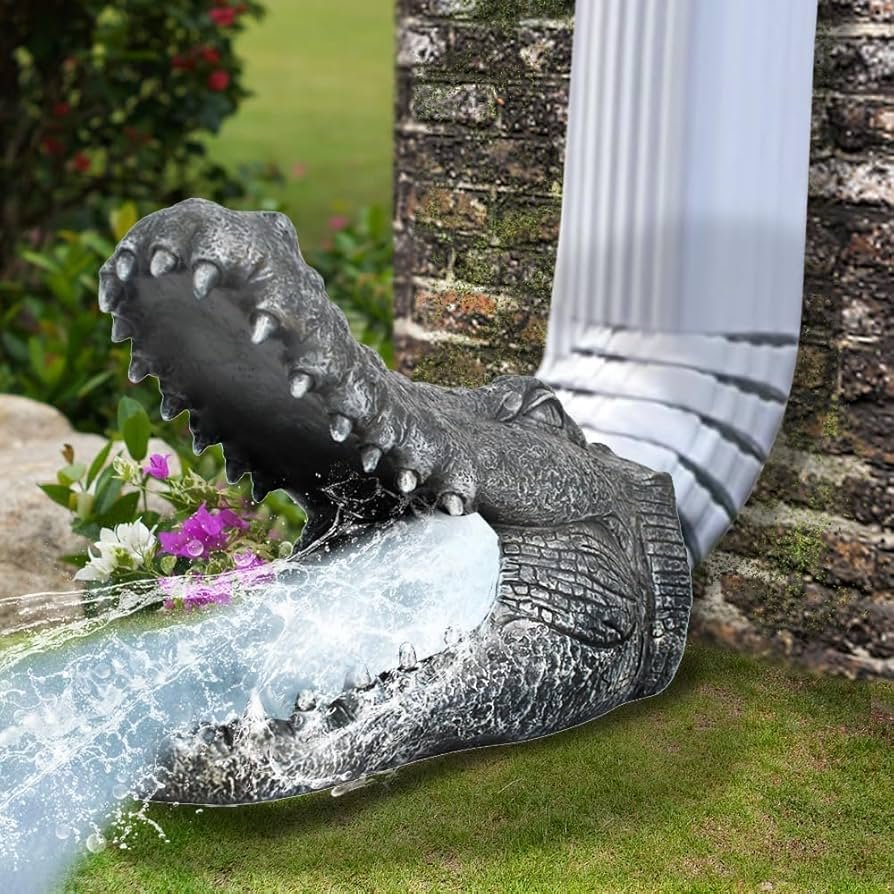
For the ultimate in style-meets-function, consider installing a sculptural downspout. These custom or premade designs resemble animals, vines, musical instruments, or abstract forms—and they still guide water exactly where it needs to go.
They’re usually made of metal or resin and can be installed in place of the standard downspout elbow. Whether it’s a fish “spitting” rainwater or a copper vine weaving along the wall, these add serious character.
This is a great option if you want your home to stand out and appreciate the artistic side of outdoor design. It’s drainage with personality.
Wrapping Up
Downspout drainage doesn’t have to be hidden or boring. With these 15 creative ideas, you can protect your home while adding beauty, charm, or even sustainability to your yard. Whether you prefer sleek and modern or rustic and whimsical, there’s a solution to match your style and climate.
Remember: good drainage isn’t just about protecting your property—it’s also a chance to get creative with your landscaping. Pick an idea or mix and match a few for a fully customized, water-smart yard.

